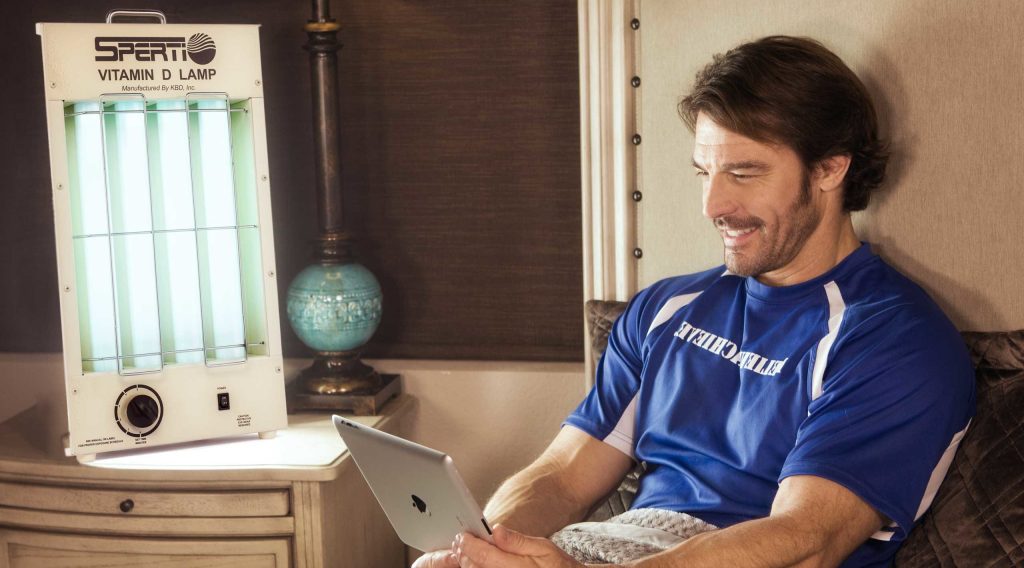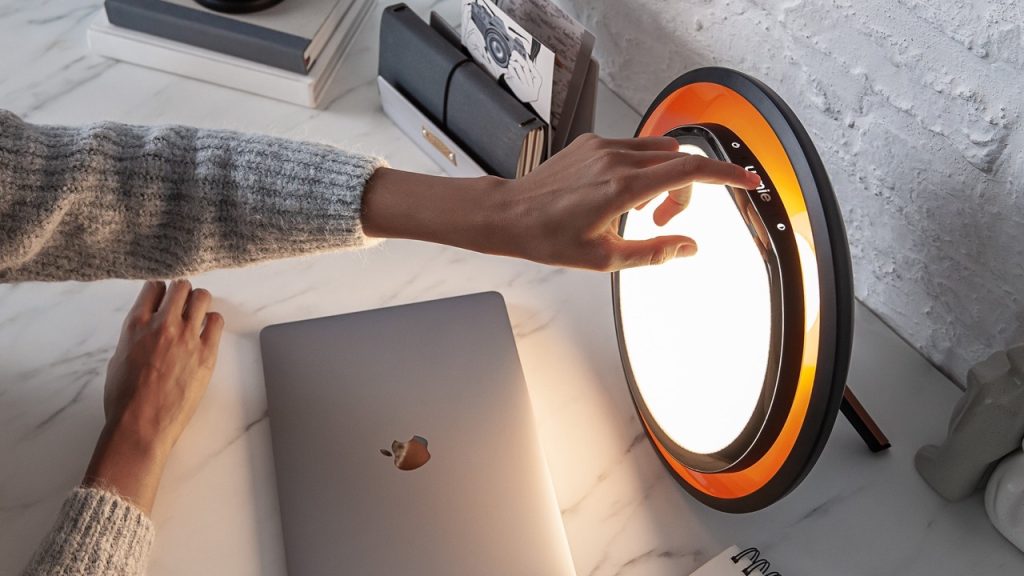With light therapy lamps becoming increasingly popular, we started using them for various reasons. Lately, one of the most common confusion regarding light therapy was whether you could get vitamin D from a light therapy lamp and, if yes, which light you should utilize. So, can you get vitamin D from a light therapy lamp?
Light therapy certainly helps with SAD, but we still haven’t covered the production of vitamins.
This article will explain the differences between these two types of light therapies and how you can make the most out of them.

Source: sperti.com
Can You Get Vitamin D From a Light Therapy Lamp
In autumn and winter, when we do not get out as much and when we can sometimes barely see the sun, we might become more depressed, and our mood might go significantly down. The biggest reason is the lack of vitamin D in our bodies that we usually get from the sun.
As this vitamin plays such an important role in our overall well-being, we decided to write this article and finally eliminate the confusion of whether you can get vitamin D from a light therapy lamp or not.
That being said, you can get vitamin D from a light therapy lamp as long as it contains UVB. But, if you use light therapy lamps such as SAD lamps with UVB, you might significantly improve your vitamin D level.
Therefore, we will take a quick look at the differences between the two most popular light therapy lamps and let you decide which one would work for your specific needs best.
Sun lamps vs. UVB therapy lamps
Sun lamps without UVB
Namely, if you use sun lamps, most of them do not consist of UVB, so you will not be able to get vitamin D. These lamps are supposed to possibly improve your mood after two to four days. The light bulb should be 10,000 lux for about half an hour every morning to get the desired results.
Moreover, sun lamps’ biggest impact is supposed to be on your circadian rhythm. As this rhythm affects the body’s natural cycles, such as when it is time to wake up and sleep, you may eliminate insomnia and experience a higher sleep quality.
UVB light therapy lamps
On the other hand, if you are looking for a light therapy lamp that might improve your vitamin D levels, you can try UVB therapy lights.
Unlike sun lamps, these lamps emit UVB, which might stimulate vitamin D production. But, besides this great feature, utilizing a UVB light therapy lamp carries certain risks, and you need to use it with a lot of caution and prior consultation with a professional.
Additionally, as there is not enough research on whether these lamps work for SAD, many scientists suggest not taking the risk of using this lamp because UVB is the one that causes sunburn and even cancer.

Source: lumie.com
What Time of the Day Should You Use Light Therapy
Regardless of whether you decide on a sun lamp or UVB lamp, and because the main reason for these lamps is to possibly improve your mood and provide positive energy, the best time of the day you can utilize them is in the morning.
Try using them as soon as you get up, preferably before 9 or 10 a.m., because the earlier you use the light therapy, the more balance you will provide for your body’s natural circadian rhythm.
Picture this light therapy as sunlight. The earlier you see it, the earlier your body starts preparing for the upcoming day.
How to properly choose and position your light
Properly choosing and positioning your light is crucial because if you do not do it right, there is a risk of unpleasant and negative effects.
First, you want to ensure that your light bulb is 10,000 lux so that you can achieve the desired results in the quickest time possible.
Also, another important thing is to ensure that the light bulb is not just regular but that it emits a particular kind of light on the light spectrum, whether it is red light, near-infrared light, blue light, UVB, or SAD light. This depends on your choice and preferences for light therapy.
Next, regarding the positioning of the lamp, you must never directly look into it. Place it 12 to 24 inches away from you and angle it -30 degrees away from your line of sight.
Lastly, we want to mention that you should not sit in front of the lamp for more than 30 minutes as you can experience some long-term side effects.
How long does it take for light therapy to work
Although seeing results depends on multiple factors, such as the type of light therapy you are using, your overall well-being, etc., an estimated time after which you can start seeing results and progress is about two weeks.
In the first few days, you should start noticing a smaller response, and as you progress with the therapies, this response should continuously and simultaneously progress.
If you decide on UVB therapy to get vitamin D, you might start noticing results in about four weeks when your body will slowly start producing this vitamin.
The key thing you need to remember is consistency. If you are determined to see results and benefits from light therapy, you need to follow the schedule the light therapy specialist has made for you, as that is the only way to achieve results in the shortest time possible.
Side Effects
Regardless of how safe these therapies are supposed to be, if not used correctly, there is always a risk of unwanted side effects. People report light therapy’s most common side effects: headache, nausea, jumpiness and jitteriness, dry and sore eyes, itchy skin, and redness.
Also read: How to Use Light Therapy Lamp for Insomnia
Conclusion
Ultimately, can you get vitamin D from a light therapy lamp? It depends on the lamp bulbs. If you have a UVB light therapy lamp, you can get the needed vitamin D.
Always remember that before trying light therapy, you need to consult a light therapy professional, as they will give you the ultimate guidance for safe and effective light therapy use.

Hello! I’m Nicky Rodgers.
Almost a decade ago, I got excited about the idea of employing alternative methods like red light therapy to create a healthier life.
To learn more about it, I did my Certified Light Therapist course from Photonic Therapy Institute and started looking into the intricacies of how light therapy influences several bodily processes. Before I knew it, my interest had become an obsession which resulted in this extensive blog.
Here, I offer countless well-researched articles to help you understand the benefits and uses of light therapy. I hope this information gives you a head start in your wellness journey.
